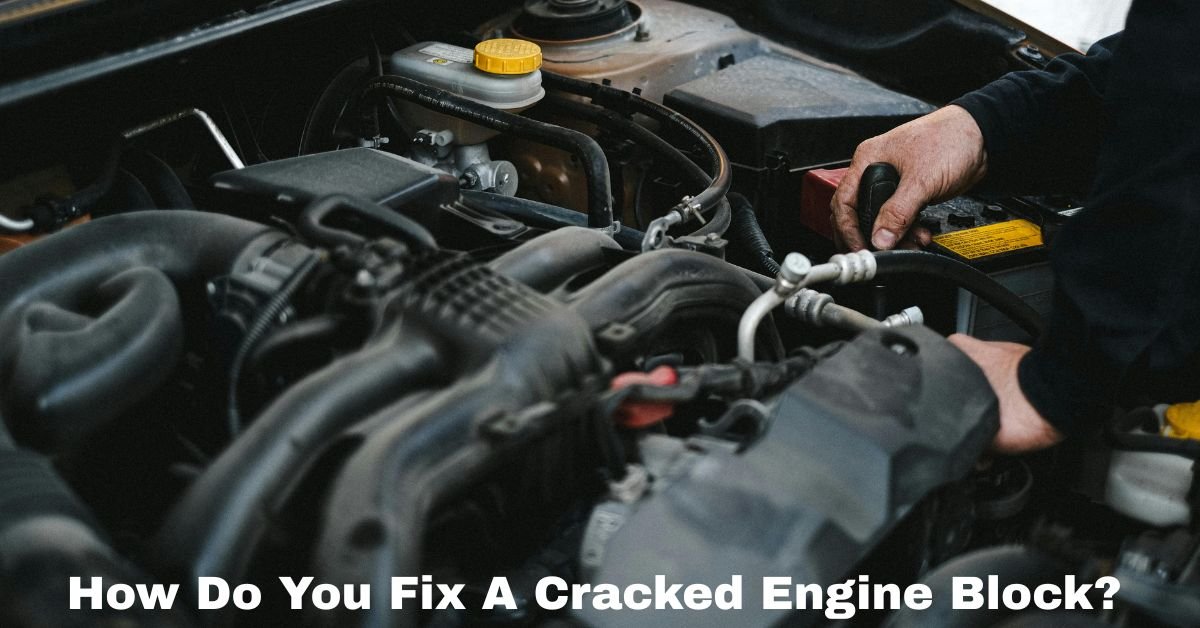A cracked engine block is one of the most serious issues a car owner can face. Often considered a death sentence for an engine, a cracked block can lead to coolant leaks, poor performance, or even a completely seized motor. However, depending on the location and size of the crack, it may be possible to repair it without replacing the entire engine. In this blog post, we’ll explore what causes a cracked engine block, how to diagnose it, and the most common methods to fix it.
How Do You Fix a Cracked Engine Block?
What Causes a Cracked Engine Block?
Overheating is the most frequent cause of engine block cracking, though there are other causes as well. When an engine gets too hot, the metal can expand beyond its design limits. If this happens repeatedly, or if the engine suddenly overheats due to a failed cooling system, cracks can develop.
Here are some typical causes:
- Lack of coolant or a failed water pump
- Frozen coolant in cold weather (if the mixture isn’t properly winterized)
- Poor maintenance leading to sludge buildup or internal corrosion
- Manufacturing defects in rare cases
Symptoms of a Cracked Engine Block
A cracked block may not be immediately obvious. The symptoms can be subtle or severe, depending on the location and extent of the crack. Common signs include:
- Coolant or oil leaks around the engine
- Overheating, even when coolant levels seem fine
- Coolant entering the combustion chamber is indicated by white smoke coming from the exhaust.
- Engine misfire or rough running
- Milky oil, which suggests coolant contamination
If you notice any of these signs, it’s crucial to stop driving the vehicle and have it inspected by a professional mechanic.
How to Fix a Cracked Engine Block
There are several ways to repair a cracked engine block, depending on the severity of the damage and your budget. Here are the most common methods:
1. Cold Metal Stitching (or Metal Locking)
Cold stitching is a mechanical repair method where metal pins or “locks” are installed across the crack. It doesn’t involve welding, so there’s no thermal stress added to the metal.
- Pros: Permanent fix, doesn’t distort the block
- Cons: Requires skilled labor and can be expensive
This method is often used for classic engines or valuable blocks where replacement isn’t an option.
2. Epoxy or Chemical Sealants
This is a more DIY-friendly option and involves using high-strength epoxies like JB Weld or commercial block sealers such as BlueDevil or K-Seal.
- Pros: Cheap and easy to apply
- Cons: Temporary fix, works best on external cracks
To apply, the engine needs to be cleaned thoroughly and the area around the crack should be dry. The sealant is then applied and allowed to cure for several hours.
Must Read: Can I Add Coolant To A Hot Engine?

3. Welding
Welding a cracked block is possible but very challenging. Engine blocks are usually made from cast iron or aluminum, both of which are difficult to weld correctly without causing further damage.
- Pros: Can be a strong, long-lasting repair if done properly
- Cons: Requires expert welding skills and proper preheating/cooling procedures
Improper welding can make the crack worse or warp the block, so this method should only be attempted by professionals.
4. Block Replacement
Sometimes, the only realistic fix is replacing the engine block or the entire engine.
- Pros: Permanent fix, ensures engine integrity
- Cons: Expensive and time-consuming
If the crack is severe—especially if it’s in the cylinder wall or near the main bearing journal—repair may not be cost-effective or reliable.
Prevention Tips
Preventing a cracked block is far easier (and cheaper) than fixing one. Here’s how you can avoid this costly problem:
- Check coolant levels regularly and inspect for leaks
- Flush the cooling system every 30,000–50,000 miles
- Use the correct coolant mixture for your climate
- Avoid overheating by watching your temperature gauge and addressing warning signs early
Conclusion
A cracked engine block can seem like a nightmare, but it’s not always the end of the road. With the right approach, some blocks can be repaired and returned to service. Whether you choose a DIY sealant or a professional metal stitching job depends on the severity of the crack and your budget. If you’re unsure of the best course of action, it’s always smart to consult a trusted mechanic or engine specialist.
